Have you wondered which trees for front yard would be best? Of course, any tree could also be planted in the front yard due to its visibility. But to enhance curb appeal and add more value to transform your existing home into a welcoming design, choosing the right tree will bring a solid focal point to your front yard. While shrubs and flower beds provide just beauty to your landscape, planting trees will absorb noise from your surroundings and add year-round interest with living features.
Different species of trees add different functions depending on your demands. While an evergreen tree gives you the year-round color without maintenance, a deciduous tree would be perfect if you want to enjoy a vivid crop of fruit, own the stunning spring blossom turn to the brilliant red fall foliage, and then the bark after the leaves fall. Many homeowners who have a small front yard are in favor of flowering trees or ornamental trees since it doesn’t occupy too much area. If you have more space, let’s consider trees providing shade to create a point of architectural interest as well as a place for you to relax for years to come.

Planting trees won’t be hard work anymore if you choose the right types of landscape trees for your yard. Before investing money into yard trees, ask yourself some questions to figure out some important rules. What kind of soil and climate conditions do you have? Do you want a fast-growing tree? Do you want your yard to be clean all year round or deciduous trees which shed leaves in the autumn?
In this article, you’ll know the best trees for front yard so that your home space will not disturb the surroundings. Keep reading or contact us right now to have a free consultation.
Don’t hesitate to call Green Arbor Landscaping at (206) 279-1450 TODAY!
I. Types of Trees for Front Yard – Bothell Landscaping
Magnolia Trees
The very first tree type that comes to this project is a magnolia. Become the signal of spring, the magnolia received much love from many gardeners because of its goblet-shaped flowers. From late January to early April, this low-branched tree will fully bloom with a varied range of colors, such as pink, white, yellow, and purple, as well as large fragrant flowers.
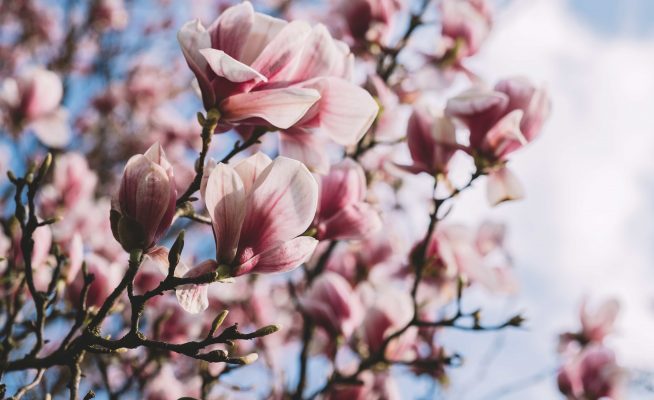
There are many types of magnolia trees for every region in the USA. But most of them prefer growing zones 5 through 9 to best provide blossoms. And one note for this species is planting them in moist, slightly acidic soil with full sun, and protecting them from over-exposure to frost since it will damage and prevent the tree from displaying blossom.
Tips: Do a research on your soil status to ensure which tree is appropriate for your front yard.
Get more tree care tips here
Have you ever heard about Jane Magnolia, Magnolia Black Tulip, Magnolia Grandiflora,…? Yes, you’re right: they all belong to the same class. However, they appear in many different choices of homeowners, from 10-feet-tall of Magnolia Black Tulip when mature, to smaller varieties like Magnolia Grandiflora but still producing stunning blossoms without becoming messy.

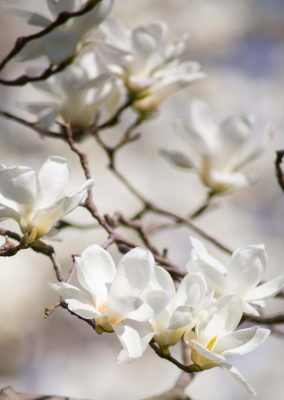
Weeping Cherry Trees for Front Yard
With novel shapes, the weeping cherry tree is one of the most popular flowering trees for the front yard. In April, these cherries will explode with pink and white flowers while the tree can reach about 20 – 30 feet tall, covering the entire garden. This ornamental tree brings the phenomenal beauty of spring, providing a breathtaking entrance with graceful elegance.

A cherry tree grows best between zones 4 and 8 with a wide variety of species. If you’re looking for white flowers, let’s consider Shidare Yoshino. Or if you’re in love with pink blooms, Okame Cherry Tree and Weeping Higan would be the best choice for your design.
This yard tree is easy to maintain but has problems with diseases. So, you need to consider and will spend a lot of effort to save this beauty. Or call West Seattle landscapers to have the best tree care services.
Flowering Dogwood Tree
Flowering dogwood is another popular choice in the US, especially when you want to attract wildlife to come into your front yard tree. Always being compared to crabapple trees, dogwood trees for front yard are known as an amazing four-season display since they provide gorgeous springtime blossoms, clusters of pink fruit in early summer, stunning fall foliage, and branching patterns for winter interest. Its flowers in the spring can last about 4 weeks, riching with wonderful bees and butterflies.

Flowering dogwoods best grow in zones 5 – 9 requiring much water and sunlight. Although this species is not known as a fast-growing tree, the mature dogwood can reach 30 feet tall. But don’t worry if your yard is small: there are many variables of flowering dogwoods such as Cornus Kousa (just 3.5 – 5 ft tall), China Girl (13 – 20 ft tall), and Milky Way (10 feet tall).
With high adaptable and drought tolerant, flowering dogwoods can be planted on many sites but not in soggy soil. In cooler months, Pink Flowering Dogwood trees produce many red berries which become the main feeding sources of birds and other wildlife. Let’s consider red, white, or pink blooms for your yard design now!
Japanese Maples – Stunning Trees for Front Yard
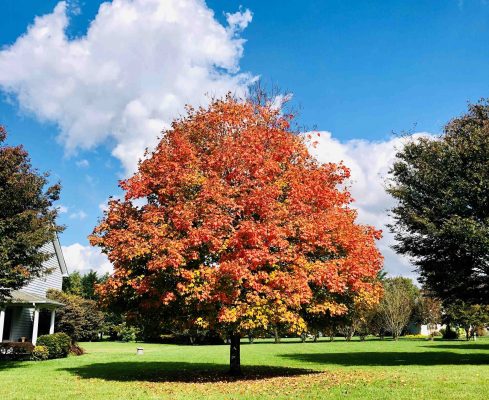
Japanese maples tree is a slow grower with many different colors, shapes, and sizes which can become a breathtaking interest in your front yard. With a variety of leaf colors, not just red, Japanese maples can add rich beauty throughout the year and provide shade for your landscaping. The signature color of these maple trees is red leave but under full sun, it can turn green.
The average height of these slow-growing trees is 15 – 20 feet. But remember that since can be pretty slow growing so you need to be so patient having tree care to allow them to reach their maturity. Belong to dwarf trees, they can fit any size of the front yard, especially when being along with periodic trimming.
>>> Explore more: How to Trim Trees and Shrubs?
Crabapple Tree
Like Japanese maples for front yard, crabapple trees are slow growing and provide year-round beauty. But unlike maples, these trees require minimum trimming to have a nice, round shape with different varieties of trees in spring. These popular trees not only offer spring brilliant pink flowers but also function as apple trees drawing attention to wild birds and pollinators in the fall.

Its mature height is about 20 – 25 feet. They can live for many years with the least maintenance but require high sunlight and moderate rainfall amount. Explore more trees for front yard here!
Artificial Turf – Low Maintenance Lawn for Renton Landscaping
Evergreen Trees

Evergreen trees offer multi-season interest without maintenance. There are many types of this species that are appropriate for almost all of the front yard. From smaller trees like Holly trees, Green Giant Arborvitae, and Juniper trees to larger ones like cypress, cedars, spruce, and so on.

Bark Birch Trees
Many homeowners are afraid when hearing about “bark trees” for front yard since they might peel and look empty in the front yard. However, its beautiful white bark in colder parts throughout the country will impress you. The paper bark birch tree is famous for its yellow shades in the fall and peeling bark in the winter with an attractive height of 70 feet.
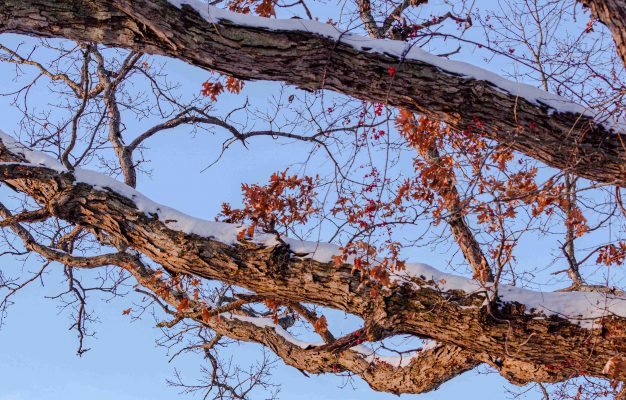
Paper birch becomes one of the best trees becoming a centerpiece in your landscaping area with different varieties. Best thrive from zones 2 to 8, the paper bark birch is a common nesting site for wildlife such as woodpeckers, swallows, nuthatches, and so on. Because of its 70-foot-tall height, you don’t need to plant more than one but still admire the beautiful focal point of bark.
If you love smaller bark trees for front yard, let’s consider a dwarf birch or bog birch.
See our list of landscaping services here!
Colorado Blue Spruces

Native to Colorado, New Mexico, Utah, Arizona, and Idaho, this one is a great choice if you don’t want your front yard to be nonsense. Picea pungens var Glauca with a measurement of 60-foot-by-20-foot creates a wonderful centerpiece for the front yard, especially during the Christmas season. Along with blue silvery foliage, these spruces have spiky leaves and brown winter buds which can best function as decoration for the whole house.
Growing in full sun, this tree has diverse species fitting any size of the yard. For a smaller front yard, you can try Globosa (2 feet), Iseli Fastigiate (10 ft tall and 2.5 ft wide), or Montgomery (10 ft tall). If you have a larger one, go for Fat Albert with a growth rate of 6′ – 8′ at maturity in a symmetrical pyramid shape.
Crape Myrtle
Crape myrtle/crepe myrtle grows up to 40 feet tall in the Southern part and about 25 ft tall in hardiness zones 7 through to 10. High drought tolerant, crape myrtle can best thrive in hot and dry conditions and explode full pink, violet, and purple blossoms during summertime. This tree is a slow-growing plant with low maintenance and is preferably south or west-facing.

Crape myrtles are easily recognized with plenty of flowers, multi-trunks, and peeling smooth bark. Known as the lilac of the South, this tree brings a lot of interest to the yard with year-round colors. The beautiful leaves really love the sun and will turn orange and red in the fall. That’s why it becomes one of the best trees for front yards in the US.
Tips: Once the tree is established, you need to avoid watering too much which makes the soil soggy since it is vulnerable to mildew.
>>> See more: How to Have Tree Care in Winter
Sunburst Locusts
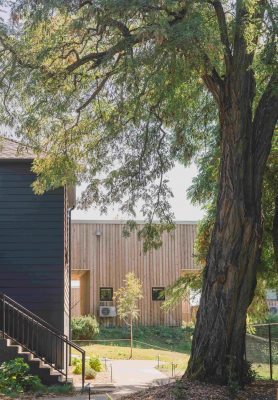
The main reason why sunburst locusts become the best trees for front yard in the USA is that they ignore maintenance but still provide an appealing look for the whole view. Moreover, they allow you to skip raking leaves which causes problems for gardeners in the fall without the help of a professional lawn care company.
Sunburst locusts are really pretty with small leaves under the high sun and moderate humidity, especially in the summer and the fall. Because of their small leaves, your front yard will not become a mess when they fall. Growing up to 40 feet, these trees help you build texture to not only your landscape but also the curb appeal along the street.
II. What is the Best Tree for Front Yard Landscaping?
Many experts suggest that you should go for trees that do not make your front yard look like a mess or make your flower beds become a mess with other plants’ surroundings. The question of how to choose the best trees for front yard depends on many factors, including your yard size, and the severity of summertime and winter in your area.
III. What is a Good Shade Tree without Messy?
You should try some evergreens since they don’t lose leaves in the fall. Some trees for front yard you can consider are green giant arborvitae, spruce, bark birch, or silver dollar tree. You will not ever be worried about raking leaves regularly to keep your yard clean or thinking about how to make your front yard always attractive.
To contact West Seattle landscapers to help you in tree care service, here is the information of Green Arbor Landscaping with over 30+ years of experience in the landscaping industry:
- Phone: (206) 279-1450
- Email: info@greenarborlandscaping.com
- Website: https://www.greenarborlandscaping.com/

